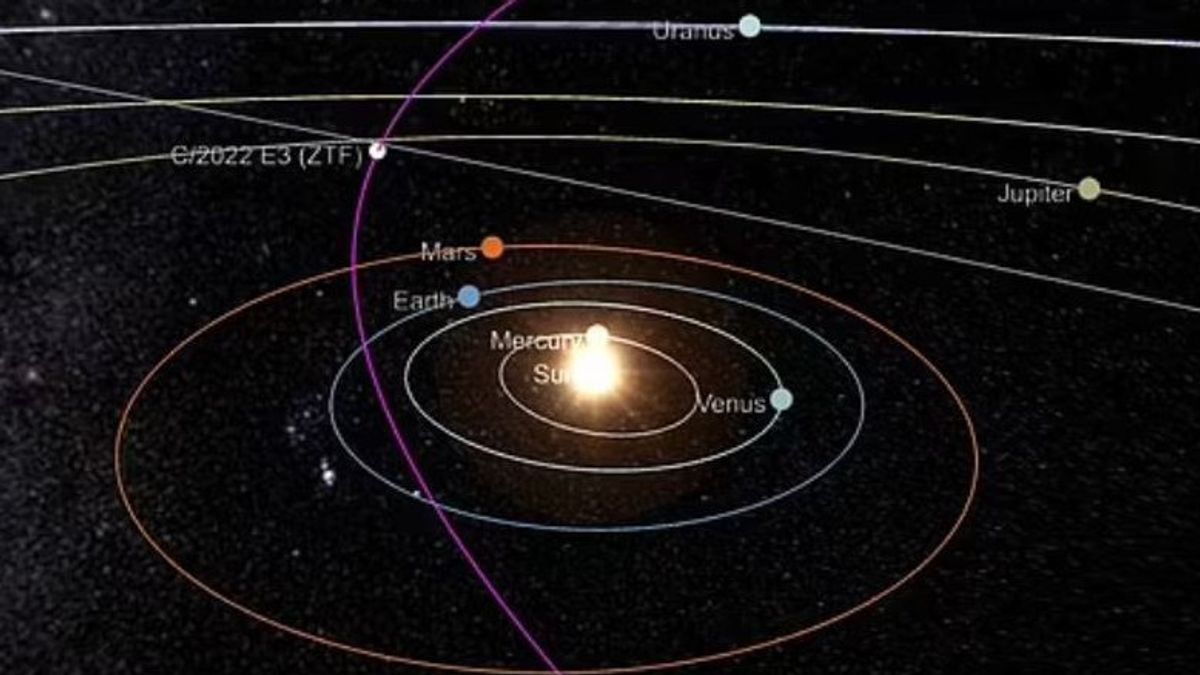JAKARTA - A comet not seen since the time when Neanderthals walked Earth is about to make a return trip across our planet. This is reported by astronomers who have shared the first detailed images of the 'cosmic snowball'.
Officially known as C/2022 E3 (ZTF), this comet orbits the sun every 50.000 years and is scheduled to make its closest approach to our planet on February 1, 2023.
E3 was discovered in March 2022, but scientists recently took the first detailed photos which reveal a brighter greenish coma and a yellowish dust tail.
The comet is too faint to see without a telescope, it should be visible to the naked eye when it is approximately 26 million miles away.
In early March, astronomers discovered Comet C/2022 E3 (ZTF) using wide-field survey cameras at the Zwicky Transient Facility.
Since then, the new long-period comet has become extraordinarily bright and is now sweeping across the northern constellation Corona Borealis in the predawn sky.
The comet is currently 117 million miles from Earth and will reach the sun on January 1, turning around and making its closest approach to our planet.
E3 will be the first comet visible to the naked eye since comet NEOWISE in July 2020.
However, NEOWISE leaves a long hazy tail and E3 will likely appear as a gray line in the night sky. E3 should have been visible on January 26 but hit its brightest on February 1.
The comet isn't the only cosmic display set for 2023, as the year will kick off with the annual Quadrantids meteor shower and end with the impressive Geminid meteor shower in December.
The Quadrantids are one of the most spectacular meteor showers of the year, and you don't need any special equipment to see them.
VOIR éGALEMENT:
The meteor shower technically begins today, but will peak on the evening of January 3 and the morning of January 4. This is an above average shower, which typically sees 40 meteors passing by per hour.
In extremes, however, up to 200 shooting stars can be seen per hour, but that depends on perfect conditions and an ideal place on Earth.
Towards the end of 2023, the Geminid meteor shower will light up the sky from December 13 to 14. Meteors are mostly white but can also be yellow, green, red or blue.
While comets cause most meteor showers, the Geminid meteor shower is unique in that it is produced when Earth passes through a trail of debris created by the asteroid known as 3200 Phaethon.
The Geminid meteor shower was first reported in 1862, but it wasn't until 1983 that scientists determined 3200 Phaethon as the source.
It is called the Geminid because when the Earth passes through the debris it illuminates the star Castor in the constellation Gemini.
The English, Chinese, Japanese, Arabic, and French versions are automatically generated by the AI. So there may still be inaccuracies in translating, please always see Indonesian as our main language. (system supported by DigitalSiber.id)


















